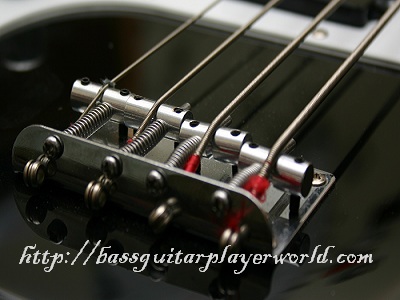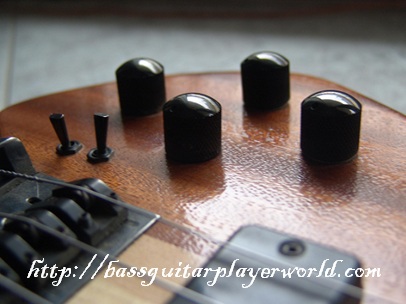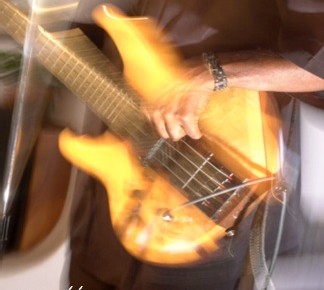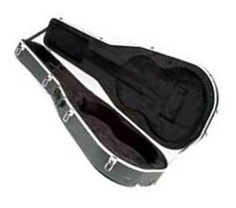Adjusting the Bass Saddle For Proper Intonation
 If you want your bass guitar to play well, you need to pay attention to something called your intonation. Your intonation, in basic terms, is your bass guitar’s ability to stay in tune all over the neck.
If you want your bass guitar to play well, you need to pay attention to something called your intonation. Your intonation, in basic terms, is your bass guitar’s ability to stay in tune all over the neck.
Believe it or not, your notes can be out of tune when fretted. This is due to your strings either being too far or too close to the nut. This results in either too much tension (a sharper note) or not enough tension (a flatter note).
Step by Step Guide to Making Saddle Modifications
In order to adjust your saddle, you will need either a screw driver or an Allen (hex) wrench.
Plug into a tuner. Play your open E, and then play your E fretted on the twelfth fret. You may notice that you twelfth fret note is off. Don’t dismiss this; it is important that you adjust the saddle so that your bass guitar is properly tuned.
If your note is sharp, you will need to tighten the saddle, or bring it closer to the nut. If it is flat you will need to loosen the saddle, or bring it further from the nut. Bringing it closer reduces tension on the string, thus flatting the note. Bringing it further from the nut increases the tension of the string thus sharpening the note.
Keep your bass guitar plugged into the tuner. Make a quarter turn adjustment to your strings saddle. Tune up your open string so that it is perfectly tuned once more (yes it will go out of tune, the tension is being changed) and then check the tuning of your twelfth fret. If your tuning is even, then you are all set to move on to the next string and adjust its saddle properly. If your tuning is still off, you need to make further adjustment.
Retune Your Open String in Between Each Adjustment
 This is important, as when your move the saddle, you change the tuning. If you don’t retune, you are intonating to the wrong note. Never adjust the saddle more than a quarter turn at a time. This is because tiny adjustments of the saddle make a large difference.
This is important, as when your move the saddle, you change the tuning. If you don’t retune, you are intonating to the wrong note. Never adjust the saddle more than a quarter turn at a time. This is because tiny adjustments of the saddle make a large difference.
Each time that you adjust the saddle, the note is changing. There is very little difference in frequency between a slightly sharpened note and a perfectly tuned note. Each turn adjusts the total frequency a tiny bit. Do the math.
It is important that you intonate your bass guitar each and every time that you change tunings.
Why Should You Go Through the Hassle Everytime?
You are changing the open notes. The neck is intonated to the previous tuning. This means that your drop C tuning is intonated to E standard. Your notes will be all out of whack if you don’t take the time to make the proper adjustments.
In the end, properly adjusting the saddle is all about practice. At first it might take a long time to intonate properly. Over time, as you do it more often, it will become easier. Soon enough it will be second nature.
Even if you keep your strings in the same tuning, it is best that you check your intonation when you change strings, as the saddles may move slightly due to the extreme relief of the strings being off. This simple bass guitar setup can do wonders to your guitar’s sound.
Check Out The Best Way to Learn Bass Online
If you want to go from being an average bassist to achieving a level of bass playing like a professional, JamPlay is the best resource to help you accomplish that goal in the shortest possible time. Learn from bass legends like Billy Sheehan, David Ellefson and Bryan Beller with an ever-growing library of video lessons designed to help you improve your skills.
Related Articles
Comments are closed.





